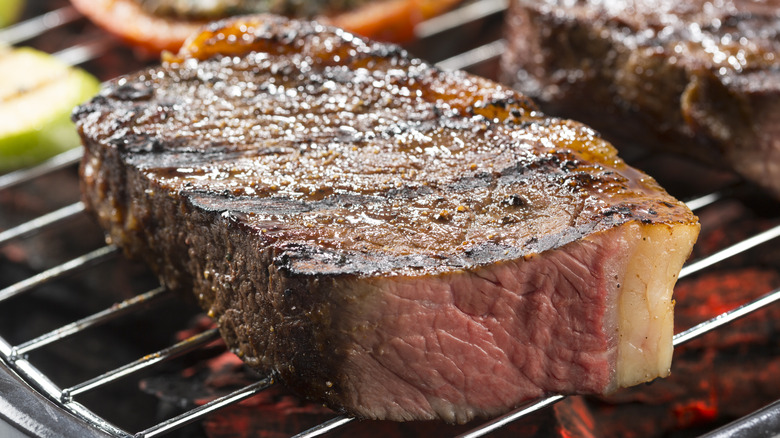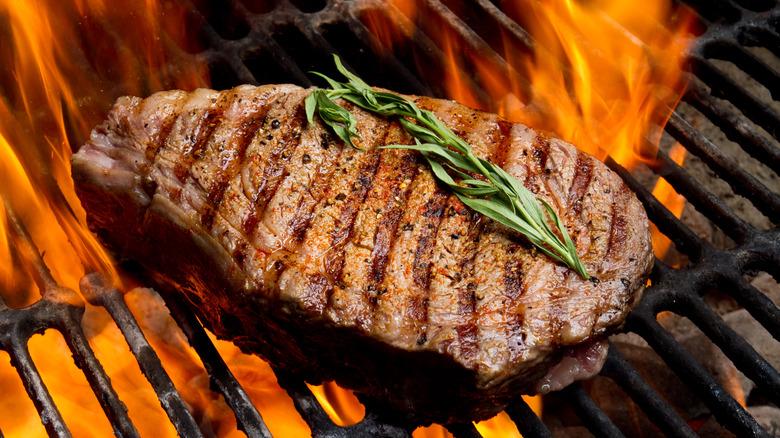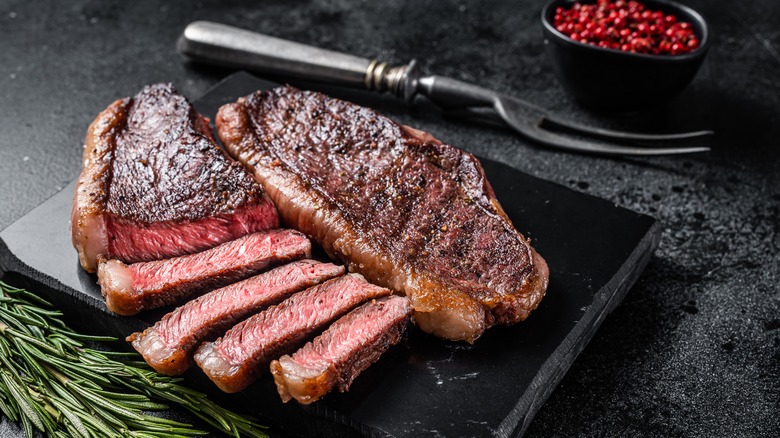How To Perfectly Reverse Sear A Steak For Crispy, Juicy Results
There are a number of ways to cook a steak, but the reverse sear method has certainly soared in popularity in the last few years, thanks to its ability to achieve a perfectly juicy steak nearly every time. While you may have tried reverse searing your beef using an oven and the stovetop, it's also possible to do it on the grill.
Reverse searing is the simple process of cooking a steak over low heat for most of its cooking time before quickly finishing the meat over high heat. This easy method ensures an even doneness within the steak while creating a flavorful crust on the exterior. There are a few downsides to cooking a steak this way, but it's a favorite method of many chefs, including Andrew Zimmern. The instructions seem simple enough, but Dustin Green, Head Grill Master and Director at Weber Grill Academy, Americas, gave us some exclusive insight into how to execute the perfect reverse sear for the juiciest steak with the best outside caramelization.
How to reverse sear
Green suggests starting the cooking process over indirect, low heat — at about 250 to 300 degrees Fahrenheit. He cautions that since the steak is being cooked low and slow, it will need to cook longer compared to a steak grilled over high heat. He noted that he would typically pull a 1.5-inch New York Strip steak off of the grill at 105 degrees, expecting it to reach 128-130 degrees when resting. While for a medium-rare reverse seared steak, there is less carryover heat, so you would pull it at about 115 degrees and let it rest until it reaches the desired internal temperature.
Next, Green says to increase the temperature of the grill to a good searing temperature of 550 degrees or higher. Once the grill reaches the intended temperature, return the steak to the grill over direct heat and cook until it's done to your liking and a caramelized crust has formed.
Tips for the best reverse seared steak
If you're new to reverse searing, Green suggests exercising patience. You may think of cooking steak as a quick, fiery affair like you see on cooking shows, but reverse searing is all about cooking it low and slow, then blasting it with heat at the very end for that crust we all know and love and a tender interior.
As with any steak preparation, you'll want to let the beef rest after cooking. This allows the juices to settle in the steak (or any other meat) and results in a juicier, more flavorful piece of meat. A general rule of thumb is to allow the meat to rest for about half the amount of time it took to cook it. For thicker cuts, you can use an aluminum foil tent, but for thinner ones, just allow them to rest on a plate uncovered until ready to serve.



